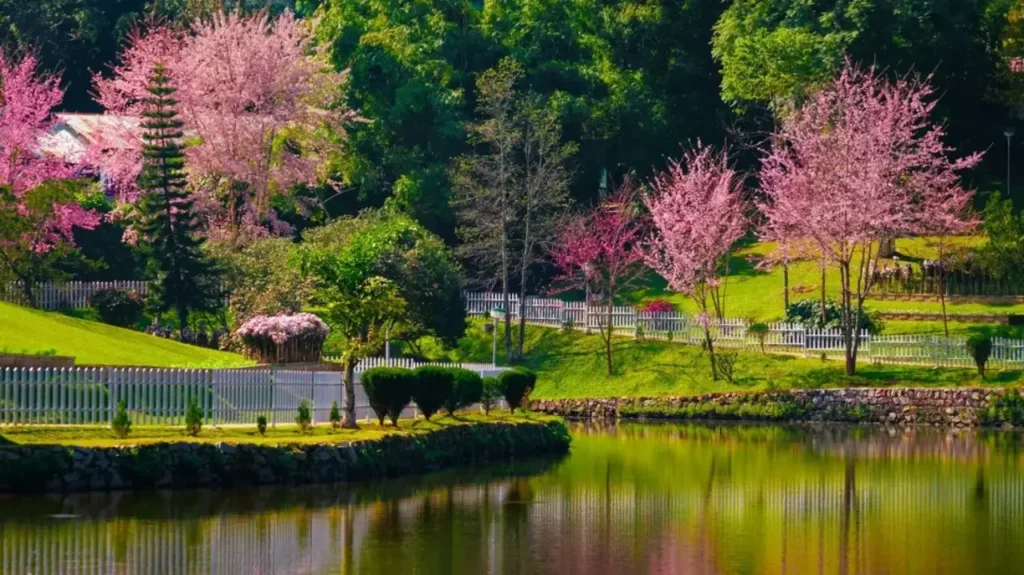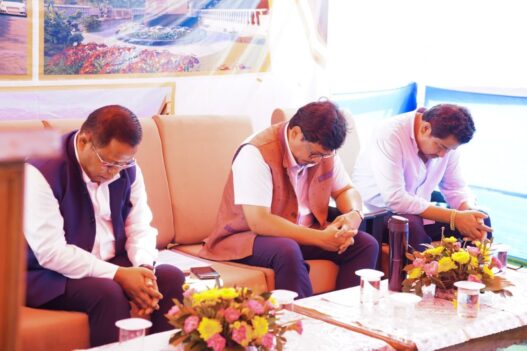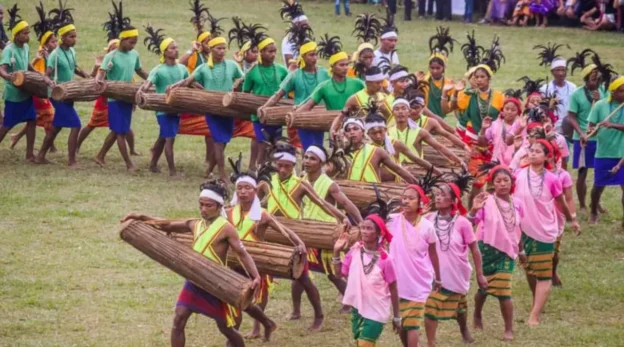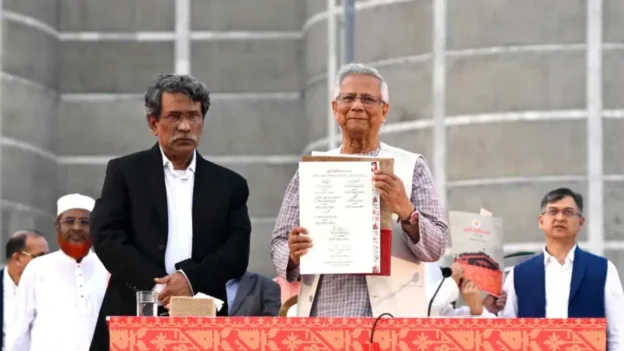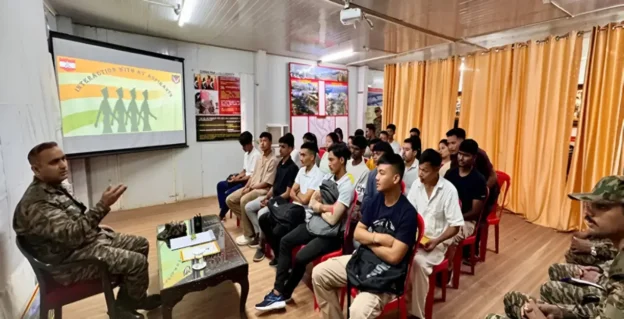When the cherry blossoms bloom in Shillong, the city transforms into a dreamscape — its hills bathed in shades of soft pink and white, its air alive with music, laughter, and a quiet pride that runs deep in its people. Every November, as winter tiptoes into the Khasi Hills, the Cherry Blossom Festival becomes more than just an event — it’s a celebration of the soul of Shillong itself.
This year, the magic returns, and it promises to be grander than ever. The stage is set, the air electric with anticipation. The Cherry Blossom Festival 2025, unveiled recently by Chief Minister Conrad K. Sangma, promises a “grand celebration of music and culture,” while also reaffirming the government’s commitment to turning Meghalaya into a hub of responsible, high-yield tourism. Sangma’s announcement came with a mix of celebration and pragmatism — a promise of festivities, yes, but also a nod to real issues like traffic congestion and the economics of investing in festivals.
The line-up this year reads like a global playlist. International headliners such as The Script, Jason Derulo, and Nora Fatehi will light up day one. The euphoria continues with Aqua and rap-pop artist Tyga on day two, culminating in a pulsating closing performance by world-renowned DJ Diplo. In what is bound to be one of the most emotional moments of the festival, a special tribute will also be paid to the late Zubeen Garg, whose music defined an era and continues to echo in the hearts of fans across the Northeast.
For those who have grown up in Shillong, the Cherry Blossom Festival is personal. Long before the concerts and crowds, there was the quiet wonder of the blossoms themselves — pink petals drifting in the mountain breeze, painting the city in gentle hues. “When the city is covered in delicate cherry blossoms, particularly in November, it’s a joy to watch — it feels almost unreal,” says Wanbiang Dkhar, a local youth. For many, the sight evokes comparisons with faraway places like Seoul or Tokyo, where cherry blossoms too signal the rhythm of the seasons.
This year, the festival brings together not just international stars but also the heartbeat of local talent. Meba Ofilia, Dappest, and ADL will perform alongside bands like Girish and the Chronicles and Arius. The energy will flow across several venues — from the Stadium Main Stage to the Polo Grounds, MFA Grounds, and the Second Ground — ensuring every corner of Shillong hums with excitement. Alongside the music, the city will host a range of activities, from the Mr. and Miss Cherry Blossom competition to Cosplay and even a Cherry Blossom Arm Wrestling event. Tickets are already available online and at box offices in Shillong, with visitors expected from across India and beyond.
The government’s target this year is ambitious: over 50,000 tourists, not just visitors passing through, but travellers staying, spending, and experiencing the city. “We are hoping that we should be able to cross 50,000 tourists in numbers… I’m talking about people who come and stay and spend a few days here, book rooms,” said Chief Minister Sangma, adding that the event has consistently proven its economic worth. He pointed out that last year’s investment of around ₹20 crore generated nearly ₹130 crore in returns — a five-fold gain, reflecting the power of culture-driven economies. “Concerts and economies around festivals are productive,” Sangma said. “They create jobs and build the brand value of the state.”
Beyond the excitement, the Chief Minister was also quick to address the city’s biggest challenge — traffic. He announced a festival traffic plan inspired by past global concerts like those featuring Ed Sheeran and Bryan Adams, which restricted vehicle movement near the venue for limited hours. “Most of the people who were there at the stadium were very happy to walk for a kilometre or two,” he noted, expressing confidence that Shillong’s residents and guests would embrace the arrangement again.
On the broader question of urban mobility, Sangma highlighted concrete steps being taken to decongest the city. These include the creation of regulated parking zones, which have already generated over ₹7 lakh in revenue in just two months, with most of the proceeds going back to local communities. He also announced the near completion of several new parking facilities, including one adjacent to the Additional Secretariat, expected within 20–30 days, with others in Motphran and nearby areas to be completed by March–April.
Addressing concerns that the festival might coincide with exam schedules, Sangma assured that the government would take adequate steps to minimise disruptions for students.
As some critics continue to question the government’s investment in festivals over other sectors, the Chief Minister mounted a strong defense. “Development must be seen comprehensively,” he said, emphasizing that tourism is not a luxury but a key driver of Meghalaya’s economy. “We have always believed, and numbers have shown, that an investment of around ₹20 crores gave us a return of almost ₹130 crores. This is not expenditure—it’s investment.”
Indeed, the Cherry Blossom Festival has become a reflection of what modern Meghalaya aspires to be: a vibrant, self-assured state that celebrates its culture, embraces its youth, and opens its doors to the world. The music, the blossoms, and the people together create a story of growth — one that is both rooted in the hills and reaching toward the horizon.

